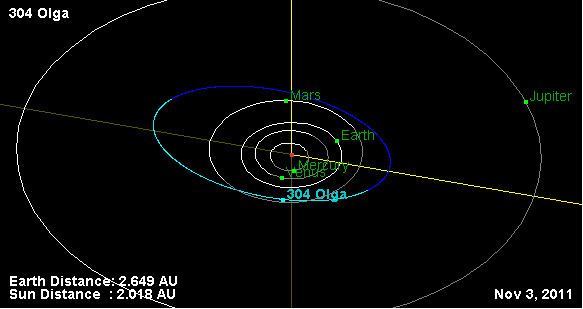Minor planet category Main belt Discovered 14 February 1891 | Discovery date 14 February 1891 Observation arc 124.78 yr (45577 d) Orbits Sun Asteroid group Asteroid belt | |
 | ||
Aphelion 2.93719 AU (439.397 Gm) Perihelion 1.86853 AU (279.528 Gm) Similar 242 Kriemhild, 220 Stephania, 276 Adelheid, 417 Suevia, 803 Picka | ||
304 Olga is a large Main belt asteroid. It is classified as a C-type asteroid and is probably composed of carbonaceous material.
It was discovered by Johann Palisa on February 14, 1891 in Vienna.
304 Olga was identified as one of three asteroids that were likely to be a parent body for chondrites along with 449 Hamburga and 335 Roberta. All three asteroids were known to have low-albedo (not reflect as much light) and be close to "meteorite producing resonances". Chrondrites are the most common type of meteor found on Earth, accounting for over 80% of all meteors. They are named for the tiny spherical silicate particles that are found inside them (those particles are called chondrules).
References
304 Olga Wikipedia(Text) CC BY-SA
